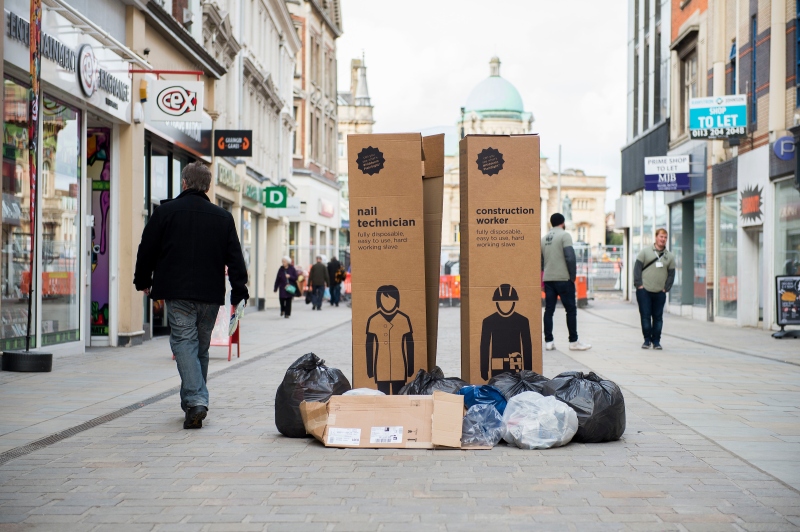When Coachella kicks off in LA you know festival season is just around the corner. Everyone enviously stares at photo’s of the celebrities and gathers inspiration for their own festival outfits.
Festivals in the UK however are much less sunshine and glitter and more mud and welly’s. If you’re one of the lucky ones you might catch a good weekend where you get 18-20 degree weather and might not actually have to wear your Hunters (even though you secretly wanted to).
Other than the music and the atmosphere the one thing everyone looks forward to throughout the festival season is without a doubt the fashion. The cropped Levi’s and paisley print garments are a year in, year out staple for everyone.
But with the year changing so do the trends, here is a list of the 5 definitive trends you need to be wearing this festival season.
1) Vintage Classics –
With BBC Radio 1’s Big Weekend being hosted in Hull this year many quaint vintage shops are flocking to stock this year’s must-have pieces. Although nothing can quite get you in the festival fabulous mind-set like H&M’s yearly ‘Coachella’ collection, timeless vintage pieces are perfect for that effortless, comfy grunge look.
Alfie Appleton, the owner of Hull’s infamous ‘Chinese Laundry’ said “Vintage fashion is ideal for festivals we can provide a full outfit from converse a pair of Levis shorts and an ethnic gypsy top”. When asked about his personal favourite key-piece for the festival season he chose a ‘US camouflage jacket’ as they are ‘ideal to layer on top of your outfit for a relaxed rock n roll style’.
2) 80’s Details –
Last year’s festivals were filled with flared trousers and hippie print dresses. Moving on from the 70’s the 80’s is the decade to watch this season. Long gone are the day’s of “all black everything” as orange really is the new black. Bright, vibrant colours such as yellow, pink and orange are taking high-street stores such as New Look and Zara by storm.
Although we aren’t going back to full 90 degree shoulder pads and fluorescent leg warmers, many 80’s trends are making a comeback. Over-sized denim jackets are the must-have jacket of the season. Graffiti, embroidery and patching are the perfect ways to give a unique edge to any jacket. Although many high street stores sell them, giving your own flair to a jacket makes it so much more personal and fun.
3) Denim –
That moves me on to the next major trend on the list. Denim is sweeping the fashion world, everywhere you turn is some form of either distressed, studded or frayed denim garment. From jackets to jeans, dresses, skirts and shirts. Even double denim is cool again! Although this is most definitely going to be one of the trends that you look back on in 5 years and think “why on earth did I ever wear that?”, that doesn’t mean you shouldn’t enjoy it whilst it lasts.
Festivals are going to be absolutely flooded with everyone wearing true denim pieces. Stylist Paige Newton, who also works for Poor Boy Boutique spoke on this season’s trends saying that “I think people are going for an edgier look this year instead of the cliché boho, Vanessa Hudgens style. Fringing is a typical festival trend, but this year it seems to have been swapped for studding. Studded denim jackets and skirts are something I see everywhere I look.”
4) The Ruffle –
It is no secret that ruffles are definitely the detail of the season. You can take any item of clothing, add an oversized ruffle and you are right on trend. This particular detailing was once branded as extravagant and childish. Who would dare wear a ruffled collar? Now the likes of Glamour magazine are branding it ‘elegant’ and ‘feminine’.
Perfect to split up your grungy casual pieces, a ruffled hem skirt or a bardot top is perfect to add a an innocent girly touch to a festival outfit. They are also perfect as their own accessory, there is no need for a dramatic necklace or an uncomfortable pair of earrings.
5) Athleisure –
One of the biggest trends of the past year has been ‘athleisure’. With the rise of brands such as Ellesse and Adidas Originals many people are going to be switching their brown suede boots for a pair of adidas Superstars. A pair of trainers gives any outfit an effortlessly cool vibe and there is so much choice from Stan Smiths to Nike Air Force 1’s.
Even designers such as Alexander Wang and Dolce & Gabbana showed an extensive range of modern athleisure in their Spring/Summer shows sporting retro colour blocking and skin tight bodysuits.
Nike released a collection dedicated especially to all the festival goers that want to look cool but still comfy at the same time. With a range of colourful sport’s bra’s and crop tops accompanied by a range of running shoes and everyones favourite ‘Classic Cortez’ shoes to add a retro look.
